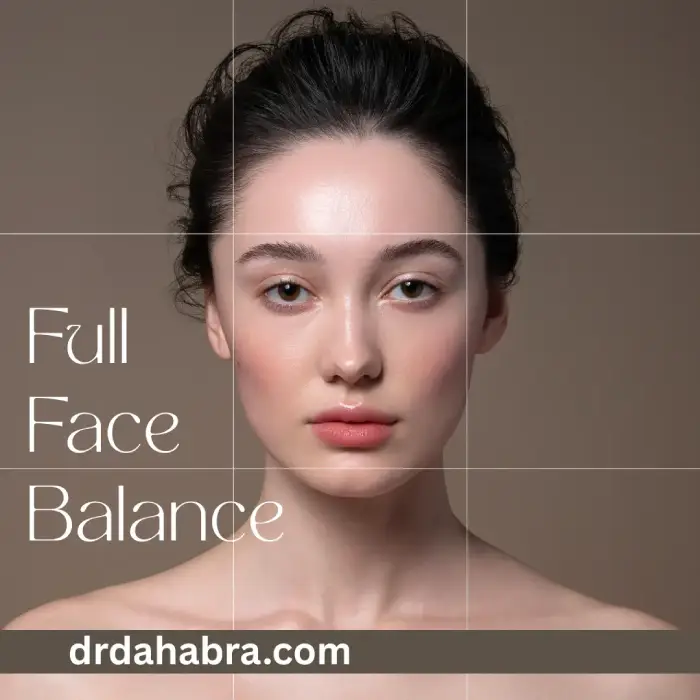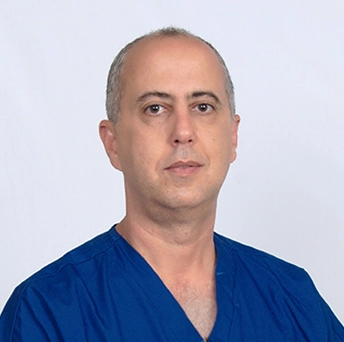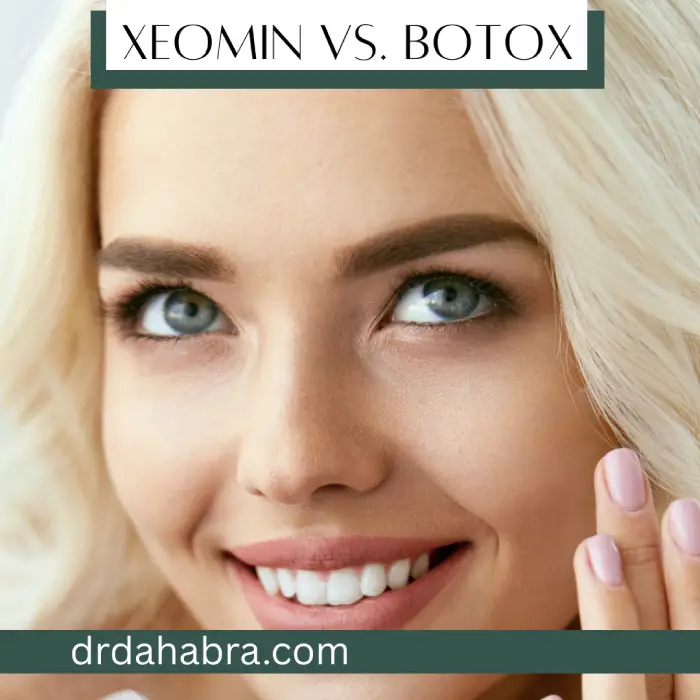Full‑Face Balance: The Art of Subtle Lift & Natural Rejuvenation
What is a full face balancing treatment?
Full face balancing is a cosmetic philosophy and procedural strategy that aims not just to correct one or two areas, but to treat the face as a holistic canvas. This article discusses Full-Face Balance: The Art of Subtle Lift and Full Face Rejuvenation.
The idea is to harmonize proportions, restore lost volume, and create aesthetic facial harmony.
In contrast to spot-fixing wrinkles or folds, a nonsurgical full-face lift via facial balancing dermal fillers addresses multiple facial zones (temples, cheeks, chin, jawline, tear troughs, and lips) in a coordinated plan, resulting in natural and balanced outcomes.
In practice, full face balancing may combine liquid facelift subtle results with targeted filler placements, neuromodulators, and sometimes collagen stimulators. The goal is subtle facial volume restoration rather than overt augmentation.
Because every cara is unique, the injector tailors the plan to each person’s anatomy, using a full-face assessment process to identify asymmetries, volume loss zones, and structural deficits.
When done well, this approach can avoid the “pillow face” or overfilled look. Patients often remark that others say, “You look refreshed” rather than “You had filler.”
As a method of rejuvenecimiento facial completo, it combines art and science, balancing proportions, smoothing transitions, and restoring a youthful lift in a natural way.
Índice
1. How does full‑face balancing differ from traditional fillers?
2. Why is the holistic “full‑face” approach superior to treating individual features?
3. What does the “subtle lift” look like, and why are users prioritizing natural results?
4. How do practitioners use the Golden Ratio (Φ) in facial aesthetics?
5. What does a comprehensive full-face rejuvenation consultation involve?
6. Which key areas of the face are assessed for a successful subtle lift?
7. How do dermal fillers create structural support and a nonsurgical lift?
8. Can neurotoxins (Botox, Dysport) be used for subtle facial shaping and balancing?
9. Are collagen stimulators (Sculptra) a better long‑term option for full face rejuvenation?
10. How can chin and jawline augmentation improve overall facial harmony?
11. How do we correct under-eye hollows (tear troughs) without creating a puffy look?
12. How can temple volume restoration contribute to an upper-face lift?
13. How do lip enhancements fit into a full‑face balancing strategy?
14. Who is the ideal candidate for full‑face balancing and a subtle lift?
15. Preguntas más frecuentes (FAQ)
16. Conclusión
17. Referencias
1. How does full‑face balancing differ from traditional fillers?
Traditional filler treatments often focus on individual problem areas, such as nasolabial folds, lips, cheeks, or marionette lines, without considering how changes in one zone affect the adjacent anatomy.
That piecemeal approach can lead to imbalance, overcorrection, or features that don’t “fit” together. In contrast, a full-face balancing mindset views the face as an interconnected system, guided by principles of facial proportionality, and seeks natural-looking facial rejuvenation across all zones.
Another key difference is planning: in full-face balancing, the injector typically begins with zones that provide structural lift (e.g., the cheeks, temples, and chin) rather than starting with superficial lines. This gives a more stable scaffold. Traditional relleno use may “fill the wrinkle” first, leading to a less optimal outcome.
En holístico approach also tends to use less filler overall, resulting in better outcomes with a lower risk of unnatural fullness, predominantly when guided by experienced best full face injectors.
Lastly, full-face balancing often incorporates complementary modalities, such as neurotoxins, collagen stimulators, thread lifts, and energy devices, rather than relying solely on hyaluronic acid fillers. This ensures that the rejuvenation strategy isn’t only volumetric but also addresses skin quality, lift, and longevity.
Thus, whereas traditional relleno work is reactive, full-face balancing is preemptive, harmonious, and integrative.
2. Why is the holistic “full‑face” approach superior to treating individual features?
When you only treat tucked‑away trouble spots, you risk creating disharmony. For instance, adding volume to the lips without assessing the chin or jawline may make the upper and lower face look disproportionate.
A holístico full-face approach ensures that each enhancement supports and complements surrounding areas, reinforcing aesthetic facial harmony rather than conflicting with it.
Additionally, a full-face plan enables the clinician to distribute filler more strategically, utilizing structural points to lift rather than simply filling every depression. This means more “bang for your syringe” and often lower total filler usage while achieving more natural lift and contour.
The improvement is not just additive but transformative in the sense of restoring balance. Over time, that can also reduce the risk of filler migrating or distorting adjacent zones, because nothing is “overstuffed.”
En última instancia, el holistic approach respects the dynamics of facial aging. Volume loss, tejido blando descent, bone resorption, and skin laxity tend to occur in patterns across the face; treating them in isolation overlooks the overall picture.
A comprehensive plan can counteract these patterns, combining full-face contouring treatments, estimulación del colágeno, and continuity of design to deliver more durable and graceful outcomes.
3. What does the “subtle lift” look like, and why are users prioritizing natural results?
A “subtle lift” is one where the change is apparent to the observant eye but not to others as “work done”, a gentle upward refresh that retains personality.
You might notice more cheek projection, smoother under-eye transitions, sharper jawline definition, or a more proportional chin, yet no one guesses you had treatment. That is the ideal: balanced, bright, age-appropriate, and not overdone.
Many people today shy away from dramatic transformations. They want the person they see in the mirror to look like a better, more rested version of themselves, what I call the “you, but younger” effect.
Hence, non-invasive face contouring and liquid lifting facial subtle results have become highly demanded. Consumers are becoming more educated and can spot an overfilled face.
They prioritize resultados naturales that age gracefully.
When a subtle lift is done correctly, it fosters confidence rather than scrutiny.
It can also be longer-lasting because the tissues are not over-stretched or forced. Overcorrection often requires revision.
Por el contrario, subtle facial volume restoration, employing a stepwise approach, enables monitoring, adjustment, and refinement over time.
4. How do practitioners use the Golden Ratio (Φ) in facial aesthetics?
The Golden Ratio (approximately 1:1.618) has long fascinated artists, architects, and aesthetic clinicians as a proportional ideal.
In facial aesthetics, it guides the relative heights, widths, and distances between facial features (e.g., brow-to-nose tip, nose width to eye spacing, etc.). Expert injectors use the Golden Ratio as a guideline to measure facial symmetry enhancement and aesthetic armonía facial, not as a rigid template but as a reference.
For example, when planning a chin augmentation to achieve balance, the projection is often carefully calibrated to ensure a harmonious result. Hence, the lower third of the face roughly adheres to the Golden Ratio relationships with the mid and upper thirds.
Similarly, the width of the jawline in relation to the cheek width may be assessed. By overlaying this proportional map during the full-face assessment process, injectors can detect deviations and plan filler placement to restore ideal proportions.
That said, applying Φ is not a mechanical process: each individual has a unique bone structure, ethnic features, and personal style preferences.
The best injectors utilize the Golden Ratio as a fluid compass, adapting it to each face’s character and guiding the goal of facial proportionality rather than forcing a cookie-cutter ideal.
5. What does a comprehensive full-face rejuvenation consultation involve?
A serious, skilled practitioner will begin with a full-face assessment, analyzing the face in frontal, three-quarter, and profile views.
They examine facial symmetry, volume deficits, bone structure, skin quality, and soft tissue laxity. The consultation should also include a discussion of your aesthetic goals, past procedures, medical history, and expectations.
Next, the injector should develop a comprehensive aesthetic plan that sequences treatments, including which zones to fill first, where to lift via threads or energy devices, how to integrate neurotoxins, and what maintenance is required. They will often preview simulations or diagrams of how full face profile correction might be achieved.
At this stage, a transparent discussion of the full face rejuvenation cost is crucial, including the number of syringes, types of products (such as hyaluronic acid fillers, collagen stimulators, and threads), and any additional modalities.
Finally, the practitioner should review the risks, recovery options, and alternatives. They may photograph your face, perform vascular mapping (to prevent complications), and obtain written consent.
The consultation also provides the client with an opportunity to ask questions (e.g., about full-face harmonizing fillers, downtime, and reversibility). A trustworthy injector offers more time and counsel than a quick sales pitch.
6. Which key areas of the face are assessed for a successful subtle lift?
Several structural zones matter for a subtle lift:
- Temples: Volume loss in this area leads to a sagging brow and hollowing; temple filler for lift can subtly elevate the upper face.
- Cheeks/midface: Restoring height and projection is one of the strongest nonsurgical lifts; cheek filler for a subtle lift is foundational.
- Tear troughs/under-eyes: Balancing the under-eye area (hollows) is critical to avoid fatigue or “shadow” effects. Tear trough balancing should be done carefully to avoid puffiness.
- Chin & jawline: A well-projected chin and firm jawline anchor the face. Jawline contouring, nonsurgical, and chin augmentation for balance, enhance profile, and lower-face flow.
Beyond these, lips, nasolabial folds, and marionette lines may be addressed, but usually later in the plan, only after the structural zones are addressed. The holistic view ensures that none of these zones are overcorrected in isolation, preserving natural proportions.
7. How do dermal fillers create structural support and a nonsurgical lift?
Dermal fillers (especially hyaluronic acid facial fillers) act as internal scaffolding.
When injected into deeper fat pads or periosteally (near bone), they can restore volume, push soft tissues upward, and re‑tension ligaments and fascial planes. This “lifting from below” effect is how fillers achieve a nonsurgical lift rather than just filling a depression.
Some HA fillers are higher G’ (stiffer) and suited for structural areas (cheeks, jawline), while softer ones integrate well in delicate zones (tear troughs or lips). When placed in a strategic order, temples, cheeks, chin, and then jawline, the upward vectors cumulatively create lift and support.
Over time, the filler integrates with the surrounding tissues, allowing for a smooth transition as it absorbs water.
Additionally, hyaluronic acid fillers can stimulate mild collagen production around them, further strengthening and anchoring the lift over time.
While they don’t match the long-term effects of surgery, this ability to combine volumization with scaffolding underlies the success of dermal fillers in achieving face balance.
8. Can neurotoxins (Botox, Dysport) be used for subtle facial shaping and balancing?
Yes, neurotoxins like Botox or Dysport are potent tools in the full-face balancing toolkit.
While they don’t add volume, they can relax muscles that pull downward or create tension, subtly reshaping the face. For example, using neuromodulators in the masseter muscles can slim a square jawline, contributing to jawline contouring with filler synergy.
Neurotoxins may also be used to achieve a nonsurgical brow lift, relaxing the depressor muscles around the brows so that the elevator muscles take over, resulting in a gentle elevation of the brows. Similarly, they can soften dynamic lines (such as patas de gallo, forehead, and glabella) and improve overall balance.
When timed correctly, the combination of filler and neurotoxin precisely constitutes a liquid facelift, yielding subtle yet effective results.
The key is restraint: overuse of neurotoxins in the lower face or around the lips can dull facial expressions or distort facial movements. A skilled injector can strategically employ a few units to shape, soften, and harmonize movement without freezing the face.
9. Are collagen stimulators (Sculptra) a better long‑term option for full face rejuvenation?
Collagen stimulators, such as Sculptra (poly-L-lactic acid), have a different mechanism than HA fillers: instead of volumizing immediately, they prompt gradual collagen growth over several months.
That makes them a compelling option for clients seeking collagen stimulation and longer-lasting facelift effects. Many full-face balancing plans incorporate Sculptra in deeper planes to provide a scaffolding effect over time.
The advantage is longevity: Sculptra results can persist 2–3 years or more, and the gradual onset makes correction less abrupt. It is especially valuable in areas that require general volumetric support rather than precise contouring (e.g., the lateral face, cheeks, and temporal hollows).
However, it lacks the immediate predictability of HA fillers and requires multiple sessions and patience.
In practice, the most effective long-term full-face rejuvenation strategy often combines HA fillers for precise sculpting with collagen stimulators for deep volumetric support. The synergy can extend the durability and reduce the total filler load over time.
That said, it is more technique-sensitive and should be performed by experienced injectors as part of a comprehensive aesthetic plan.
10. How can chin and jawline augmentation improve overall facial harmony?
The chin and jawline serve as the anchor for the lower face. Without proper projection, the midface and lips may appear too forward, or the neck may look unsupportive.
A modest chin augmentation with filler can help balance the chin with the lips and nose, improving the full face profile and perceived symmetry of the face.
Likewise, jawline contouring nonsurgical (e.g., along the mandibular border) refines the lower facial frame, sharpens definition, and reconnects the lower third with the midface. When the jawline is well-defined, cheek and midface enhancements are better appreciated because they sit on a firmer base.
By restoring the structure of the chin and jaw, the face avoids the “floating midface” effect that can sometimes occur when only cheek filler is used. In a full-face balance approach, careful augmentation of the chin and jawline can dramatically improve full-face anti-aging procedure outcomes while maintaining subtlety.
11. How do we correct under-eye hollows (tear troughs) without creating a puffy look?
Under-eye (tear trough) correction is one of the most delicate zones in full-face balancing. The aim is to reduce shadows and hollows without bulging or puffiness.
Skilled injectors use very soft, low-profile hyaluronic acid fillers placed precisely under the orbital rim, often via a cannula, and sometimes layered within deep fat compartments so that the filler doesn’t sit superficially.
By first addressing the support zones (temples, midface), the injector reduces downward pressure that exacerbates under-eye sag. Then, minimal, strategic tear trough balancing can smooth transitions and help the eye area appear younger and more rested.
Advanced planning takes into account skin thickness, under-eye fat, and the risk of vascular compromise.
Additionally, newer fillers like Volbella (approved for use under the eyes) or microdroplet techniques reduce the risk of swelling. The injector must avoid “overcorrection,” which leads to puffiness.
When done judiciously and in balance with the rest of the face, the result is a refreshed aesthetic without an unnatural bulge.
12. How can temple volume restoration contribute to an upper‑face lift?
As we age, temple hollows deepen, causing the brow to descend and the lateral upper face to collapse.
By placing temple filler for lift, volume returns to that zone, supporting the brow and indirectly elevating the upper third of the face. This subtle push can reduce hooding of the brow and improve forehead proportions.
Rebalancing the temple also restores the smooth transition from forehead to lateral cheek, which is often disrupted in aging faces. Proper temple volumization helps to offset sag from midface descent, reinforcing the entire facial architecture.
In a holistic plan, temple filler is frequently one of the first zones addressed to provide a stable “ceiling” for downward lift vectors.
Moreover, because temple filler is less visible but highly structural, it offers a subtle yet high-impact benefit.
When combined with midface and lower-face enhancements, it contributes to a cohesive, nonsurgical full-face lift effect without dramatic alteration.
13. How do lip enhancements fit into a full‑face balancing strategy?
Lip enhancements in the context of full-face balancing are not simply about adding volume; they’re about proportion. The lips should harmonize with the chin position, nasal base, and midface height.
Overfilled lips can ruin balance if the lower face lacks structure. Within a full-face balancing treatment, lip filler is often scheduled after the structural zones have been addressed.
In many cases, a minor lip adjustment can improve symmetry, correct asymmetry, or balance vertical proportions. But the injector must be careful: overzealous lip volume can overshadow adjacent zones or interfere with facial symmetry enhancement efforts.
Ideally, lip injection is fine-tuning, not the center of the plan.
The key is minimal, precise placement using softer, flexible hyaluronic acid fillers that retain natural movement. Done well, lip enhancements add freshness without screaming “done”, again reinforcing the goal of natural-looking rejuvenecimiento facial.
14. Who is the ideal candidate for full‑face balancing and a subtle lift?
The ideal candidate is someone with mild to moderate facial volume loss, early signs of sagging, or subtle asymmetries, but still exhibits good skin elasticity.
They should have realistic expectations: this is not a surgical facelift replacement but a minimally invasive alternative. People often seek full-face balancing when they want to avoid surgery but desire more than single-area fillers.
It also helps if they are in good health, without uncontrolled medical conditions, are not pregnant or breastfeeding, and are not taking medications that thin the blood. The candidate should also understand that maintenance is part of the journey; fillers, collagen stimulators, or thread support may be needed periodically.
A person who values gradual, natural transformation over dramatic change is the best fit.
Furthermore, candidates who have had prior filler or cosmetic work should disclose that, as the injector may need to dissolve old product, assess scar tissue, or plan around previous anatomical alterations.
Anyone considering full-face balancing must first undergo a full-face assessment process to ensure safety, feasibility, and a tailored plan.
15. Frequently Asked Questions (FAQs) about Full-Face Balance: The Art of Subtle Lift and Full Face Rejuvenation
Q1. How much filler is too much for a natural-looking full-face balance?
Respuesta concisa: Too much filler is when facial features lose definition, look swollen, or appear disproportionate.
Respuesta detallada: The threshold of “too much” varies by face, but signs include blurring of sharp contours, bulging (especially in lines like marionette or tear trough), or a “pillow face” effect. A truly balanced result is one where changes are harmonious and cohesive.
If one area dominates or appears overfilled relative to others, you’ve crossed into excessive territory. Experience and restraint from the injector are essential to avoid this.
Q2. Can you do equilibrio facial without fillers?
Respuesta concisa: Yes, through modalities like Hilos PDO, collagen stimulators, energy devices, or fat grafting.
Respuesta detallada: Filler is often the primary tool for volume and structure, but facial balancing can also involve the use of PDO threads, RF microneedling, ultrasound (HIFU), or platelet-rich fibrin (PRF) combined with skin tightening techniques. These non-filler options lift, tighten, and estimular el colágeno, offering subtle rejuvenation without volumization.
In some cases, fat transfer may also be used, although it is a more invasive procedure.
Q3. Why is skin texture and tone essential for a truly rejuvenated result?
Respuesta concisa: Because even perfectly balanced volume can look unnatural if the skin is rough, dull, or damaged.
Respuesta detallada: Volume and contour alone can’t overcome poor skin quality. Fine lines, discoloration, enlarged pores, or lax texture betray age.
Enhancing skin tone through lasers, peels, or medical-grade skincare ensures that a vibrant skin canvas supports the rejuvenated shape. Without it, the volumetric results may appear flat or inconsistent, undermining full-face balance.
Q4. How do medical-grade cuidado de la piel regimens maintain the results of full-face treatments?
Respuesta concisa: They support collagen, improve skin health, and help delay filler breakdown.
Respuesta detallada: High-quality retinoids, antioxidants (vitamin C, peptides), growth factor serums, and SPF protect and nourish the skin, reinforcing collagen and elasticity. This environment slows the degradation of hyaluronic acid facial fillers, maintains skin resilience, and enhances long-term outcomes.
In effect, good skincare is the supporting cast to the starring role of injectables.
Q5. How can I avoid the “overfilled” or “pillowy” look associated with poor technique?
Respuesta concisa: Choose a skilled aesthetic injector who emphasizes balance, restraint, and anatomical precision.
Respuesta detallada: The best safeguard is experience: a practitioner who plans a comprehensive aesthetic plan, starts with structural zones, uses appropriate filler types, and injects gradually. You should avoid clinics pushing cookie‑cutter “8-point facelift” packages without customization.
Always ask to see before-and-after examples, inquire about resultados naturales, and ensure you start conservatively; touch-ups are easier than removal.
Q6. How long do the results of a full-face rejuvenation treatment typically last?
Respuesta concisa: Results usually last 9–18 months, possibly longer with collagen stimulators or maintenance.
Respuesta detallada: HA fillers typically last 9–18 months, depending on formula, metabolic rate, and location. Some premium fillers or collagen stimulators (like Sculptra) may stretch longevity to 2–3 years.
Thread lifts and energy devices may require retreatment periodically. Maintenance sessions help preserve results. Overall, realistic planning expects gradual touch-ups.
Q7. What is the recovery and downtime expectation for a nonsurgical full-face procedure?
Respuesta concisa: Most patients experience minimal downtime, mild swelling, bruising, or tenderness for 1–3 days.
Respuesta detallada: After treatment, expect minor swelling, redness, or bruising, particularly in areas with thin skin (e.g., the tear trough). Most people return to regular activity immediately, though strenuous exercise is often deferred 24–48 hours.
Final settling takes 1–2 weeks. Compared to surgical facelift recovery, downtime is minimal.
Q8. Can full-face balancing actually age you up if done too young or aggressively?
Respuesta concisa: Yes, overfilling too early or too aggressively can distort natural growth or symmetry.
Respuesta detallada: If full-face balancing is performed on a face that still retains natural anatomical tension and volume, aggressive injections can distort proportions or accelerate sag by overstretching the tissues.
In younger patients, it’s safer to adopt a conservative “less is more” approach, enhancing only the necessary zones rather than implementing a complete five-year plan too early.
Q9. Is it better to get a traditional surgical facelift or a liquid (nonsurgical) facelift?
Respuesta concisa: The decision depends on the severity of skin laxity, age, and personal expectations; each factor has its pros and cons.
Respuesta detallada: A surgical facelift offers durability, skin tightening, and repositioning power that injectables can’t fully match. However, it comes with surgery, downtime, and a significant coste.
A lifting líquido or full-face balancing offers a less invasive refresh, with a lower risk, minimal downtime, and reversibility, but provides a more modest lift and a finite duration. Many patients opt for injectables earlier and reserve surgery for later stages.
Q10. What are the best nonsurgical procedures for loose skin/sagging after weight loss?
Respuesta concisa: A combination of elevadores de rosca, RF/ultrasound devices, collagen stimulators, and careful filler is often optimal.
Respuesta detallada: Weight loss can accentuate sag and thin skin. In such cases, injectables alone may not suffice.
PDO thread lifts, radiofrequency microneedling, Ultherapy, or laser tightening can help firm lax areas of the skin. Below that, full-face balancing with non-invasive facial rejuvenation strategies restores volume and contour.
The best approach is synergistic and tailored to each individual’s needs.
Q11. How do I need facial balancing for anti-aging or just for beautification/proportions?
Respuesta concisa: If you notice volume loss, asymmetry, or imbalance, not just wrinkles, you may benefit from full-face balancing.
Respuesta detallada: Wrinkles respond to superficial fillers and toxin treatments. However, when you notice sagging, drooping cheeks, a weak chin, or hollow temples, that signals a structural imbalance.
A full-face approach addresses those foundational changes. A consultation with a skilled injector who performs a comprehensive full-face assessment can help clarify whether you require structural balancing or just wrinkle smoothing.
Q12. Is it true that filler doesn’t dissolve completely, making it more permanent than advertised?
Respuesta concisa: In rare cases, remnants of filler may persist, but high-quality HA fillers are mostly resorbed over time.
Respuesta detallada: Ácido hialurónico fillers are metabolized gradually. However, small crosslinked portions or biofilms can persist in some individuals, especially if they are overfilled or misinjected.
In practice, most fillers dissolve or integrate. That said, any residual material is usually clinically insignificant.
Using reputable products, proper technique, and conservative volume helps reduce this risk.
Q13. Is there a way to correct an uneven smile with facial balancing techniques?
Respuesta concisa: Yes, asymmetry in smiling can often be balanced by adjusting volume in lips, perioral muscles, or modulating muscle activity.
Respuesta detallada: An uneven smile may arise from structural asymmetry or muscle hyperactivity. A full-face plan can subtly adjust lip volume, add filler support to the depressed side, or employ neuromodulators to soften excessive movement.
Because full-face balancing takes into account surrounding zones (cheeks, jaw, chin), the corrections integrate naturally without drawing attention to the asymmetry.
Q14. What are the signs of bad filler that I should watch out for?
Respuesta concisa: Hard lumps, distortion, overcorrection, vascular occlusion signs (pain, blanching) are red flags.
Respuesta detallada: Unsafe or incorrect filler may present as nodules, irregular texture, asymmetry, bluish discoloration (Tyndall effect), or distortion of contours. More seriously, signs of vascular occlusion, such as sudden pain, pallor, ulceration, or vision changes, are medical emergencies.
Always choose a board-certified, experienced injector who understands anatomy, uses cannulas, and has protocols in place to treat complications (e.g., hyaluronidase).
Q15. What are the potential risks and side effects of full-face injectable treatments?
Respuesta concisa: Common mild risks include bruising, swelling, redness; rare but serious ones include vascular injury, infection, or blindness.
Respuesta detallada: Most patients experience mild, transient bruising, swelling, tenderness, or redness at injection sites, which resolve within days. More rare complications include infection, filler migration, granulomas, and vascular occlusion (which in severe cases can lead to skin necrosis or blindness).
That’s why understanding anatomy, using minimal pressure, aspirating, and having reversal protocols (such as hyaluronidase) are essential. Always consult a qualified, experienced injector who prioritizes safety from the outset.
16. Conclusion: Full-Face Balance: The Art of Subtle Lift and Full Face Rejuvenation
Achieving full-face balance through nonsurgical full-face lifts and facial balancing dermal fillers is more than a trend; it’s an art form.
When executed thoughtfully, it not only transforms individual areas but also restores harmony, confidence, and a aspecto juvenil. The subtle lift is far more desirable in most real-world settings than overt change, and this comprehensive approach helps you age on your own terms.
By combining structural fillers (cheeks, jawline, chin) with fine-tuning (tear troughs, lips) and intelligent use of neurotoxins, collagen stimulators, or threads, one can achieve a lifted, harmonious, and natural‑looking result.
Understanding facial proportions, the Golden Ratio, the rules of thirds/fifths, and profile lines like Ricketts’, provides a guiding framework to optimize the outcome.
The success of rejuvenecimiento facial completo hinges on a detailed full-face assessment process, strategic planning, conservative technique, and ongoing maintenance.
When you partner with a highly skilled injector who respects anatomy and artistry, the result isn’t “done”, it’s just you, only better.
We have covered everything about Full-Face Balance: The Art of Subtle Lift and Full Face Rejuvenation.
Full-Face Balance: The Art of Subtle Lift and Full Face Rejuvenation
Discover Full-Face Balance: The Art of Subtle Lift and Full Face Rejuvenation with Dr. Dahabra. ¿A qué esperas para liberar tu belleza?
Llámenos ahora al (954) 595-2607 o reserve online. Su viaje comienza con sólo un clic o una llamada.
Abraza la belleza, abraza la innovación - Embrace You.
17. Referencias
Whole‑Face Approach with Hyaluronic Acid Fillers
Institution / Source: S. Lipko‑Godlewska et al. (published via PMC)
Breve: This article advocates for a “whole-face” philosophy in tratamientos inyectables, encouraging clinicians to plan across all facial regions rather than focusing on isolated corrections, and discusses the risks, benefits, and technique principles.
Myomodulation with Facial Fillers
Institution / Source: D.D.A. Coimbra, et al. (Springer)
Breve: This paper defines “myomodulation,” the strategic placement of dermal fillers near muscles to influence muscle contraction, a valuable concept for achieving subtle facial shaping and balance.
Validation of Nonsurgical Facial Lifting with PDO Thread using a 3D Anthropometric Approach
Institution / Source: Authors publishing via ScienceDirect
Breve: This is one of the first quantitative studies to measure the actual anatomical lifting achieved by PDO thread lifts using 3D facial anthropometry, providing objective evidence for nonsurgical lifting.
Institution / Source: Authors via PMC
Breve: This study evaluates the combination of thread lift with HIFU, demonstrating that the combined approach yields better aesthetic outcomes and sustained lift compared to either treatment alone, a finding relevant to comprehensive aesthetic plans.
Institution / Source: Published via ASJ Open Forum
Breve: This RCT compares the use of different numbers of PDO threads per hemiface, finding that increasing thread count does not necessarily improve long-term lift or satisfaction, an essential insight into subtle lift planning.
Injectable Fillers: Current Status, Physicochemical Properties, and Future Directions
Institution / Source: J. Guo et al. (PMC article)
Breve: A comprehensive review of rellenos inyectables, their rheologic and material properties, safety profiles, and evolving technologies, foundational for understanding hyaluronic acid facial filler selection in full-face balance.
Institution / Source: J. Kempa et al. (ScienceDirect)
Breve: This recent study examines how volumetric changes in specific regions affect perceptions of attractiveness and gender roles, utilizing eye-tracking technology to highlight how subtle changes in one zone influence overall facial harmony.
Injection Guidelines for Treating Midface Volume Deficiency
Institution / Source: P. Trévidic et al. (ASJ)
Breve: Provides in-depth anatomical guidance and safe injection zones for the midface (cheeks, periorbital) area, helping reduce risk and optimize cheek filler for subtle lift techniques.
Aplicación de modalidades no quirúrgicas para mejorar el envejecimiento facial
Institution / Source: PMC / Institutos Nacionales de Salud
Breve: A review comparing nonsurgical techniques (fillers, neuromodulators, lasers, threads) versus surgical options, emphasizing natural outcomes, minimal trauma, and combined modality strategies.
Measuring the Impact of Surgical and Nonsurgical Facial Cosmetic Procedures via FACE‑Q
Institution / Source: Revista de Facial Aesthetic Surgery (SAGE)
Breve: This systematic review and meta-analysis utilize the FACE-Q patient-reported outcome tool to quantify the impact of surgical and nonsurgical facial interventions on patient satisfaction and psychological/social metrics, relevant to evaluating the efficacy of full-face balancing.




